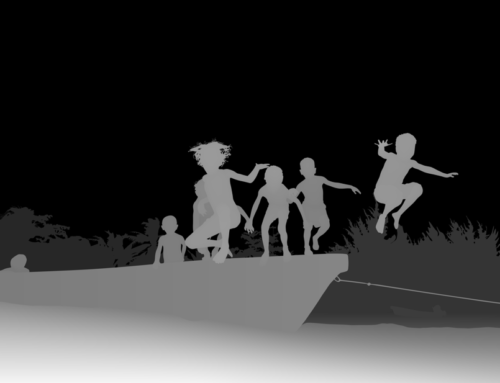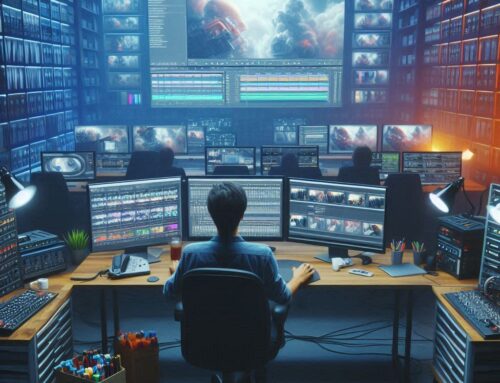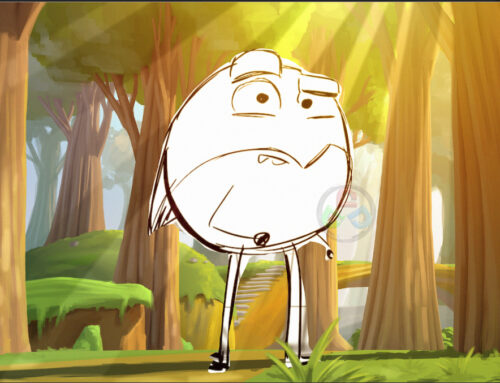Introduction: Stereoscopic Conversion in Visual Effects
In the immersive world of visual storytelling, filmmakers and studios are continually pushing the boundaries of technology to enhance the viewer experience. Stereoscopic conversion, a technique that adds depth to 2D footage, has emerged as a transformative tool, providing audiences with a heightened sense of realism and engagement. In this blog, we’ll delve into the intricacies of stereoscopic conversion, exploring its applications, challenges, and the creative possibilities it brings to the world of visual effects.
Understanding Stereoscopic Conversion in Visual Effects:
Stereoscopic conversion is the process of transforming 2D footage into stereoscopic 3D, introducing depth perception to enhance the visual experience. This technique is commonly used in post-production to breathe new life into existing content, allowing filmmakers to tap into the immersive power of 3D without the need for dual-camera setups during shooting.
Applications of Stereoscopic Conversion:
- Film and Entertainment: Used extensively in filmmaking to convert 2D content into 3D, creating immersive cinematic experiences.
- Gaming: Improves realism and engagement in video games, bringing characters and environments to life in three dimensions.
- Virtual Reality (VR) and Augmented Reality (AR): Enhances depth perception for more realistic simulations, making VR and AR experiences more immersive.
- Medical Imaging: In medical visualization, stereoscopic conversion aids in creating 3D models for diagnostic purposes, surgical planning, and training.
- Education: Utilized to develop interactive educational content, allowing students to explore subjects in a more lifelike environment.
- Advertising: Stereoscopic conversion is applied to create attention-grabbing and impactful 3D advertisements for marketing campaigns.
- Architectural Visualization: Helps architects and designers present their projects in a more realistic and immersive manner, allowing stakeholders to better understand the spatial layout.
- Simulations and Training: Used in military, aviation, and industrial training simulations to create lifelike scenarios for realistic training experiences.
- Film Remastering: Classic films or content shot in 2D before the widespread adoption of 3D technology can be remastered through stereoscopic conversion, bringing them to a new dimension for contemporary audiences.
- Television and Streaming Content: Stereoscopic conversion is employed in the post-production of television shows and streaming content to deliver an enhanced viewing experience, particularly for genres like documentaries, animations, and nature programs.
- Enhancing Visual Effects: Stereoscopic conversion can be integrated into visual effects workflows to add depth to computer-generated elements or seamlessly blend CGI with live-action footage, creating a more immersive and realistic environment.
Follow our Newsletter on LinkedIn
The Stereoscopic Conversion Process:
- Depth Mapping: The first step involves analyzing the 2D footage to create a depth map, assigning different depths to various elements within the frame. This depth map serves as a guide for the conversion process.
- Left and Right Eye Views: Using the depth map, the software generates separate left and right eye views to mimic the way human eyes perceive depth. These views are then combined to create a stereoscopic effect.
- Parallax Adjustment: The process includes adjusting the parallax, or the perceived displacement of objects between the left and right eye views, to achieve a natural and comfortable viewing experience.
- Quality Control: Rigorous quality checks are conducted to ensure that the stereoscopic conversion maintains visual integrity, minimizing artifacts and discrepancies in depth perception.
Challenges in Stereoscopic Conversion:
While stereoscopic conversion offers numerous benefits, it comes with its set of challenges, including:
- Ensuring a natural and comfortable viewing experience without inducing discomfort or visual fatigue.
- Addressing potential artifacts or distortions that may arise during the conversion process.
- Adapting the depth mapping to different scenes and lighting conditions for consistency.
Creative Possibilities:
Stereoscopic conversion opens up new creative avenues for filmmakers, allowing them to revisit and revitalize existing content. It provides a fresh perspective on storytelling, immersing audiences in worlds that were once confined to the flatness of the screen.
The Future of Stereoscopic Conversion:
As technology advances, the future of stereoscopic conversion holds exciting possibilities. With the integration of artificial intelligence and machine learning, the conversion process may become more automated, efficient, and capable of handling a wider range of content.
Conclusion:
Stereoscopic conversion stands as a testament to the dynamic relationship between technology and storytelling. By imbuing 2D content with the depth and dimensionality of 3D, filmmakers can transport audiences into worlds that feel more vivid, immersive, and captivating. As the capabilities of stereoscopic conversion continue to evolve, it is poised to play an increasingly significant role in the ever-expanding canvas of visual storytelling.




